Autumn-blooming perennials will keep the garden full of color until frost and cold weather arrive. Though comparatively few in number, autumn blooming perennials offer an abundance of blooms and a brilliance of colors. You could easily devote an entire garden to autumn-blooming perennials.
Autumn-blooming perennials are best planted in spring and early summer, but with care, they also can be planted in late summer and early autumn. The key to planting perennials is to set them in the ground when the soil is warm; this allows roots to become quickly established. Keep newly planted perennials watered and get them growing with a soluble all-purpose fertilizer or a dilute solution of fish emulsion.
You can find fall-blooming perennials in garden centers in late summer and early spring.
Here are ten autumn-blooming perennials that will bloom in full sun and part sun. (Plant seven or more of each to create an impressive show.)
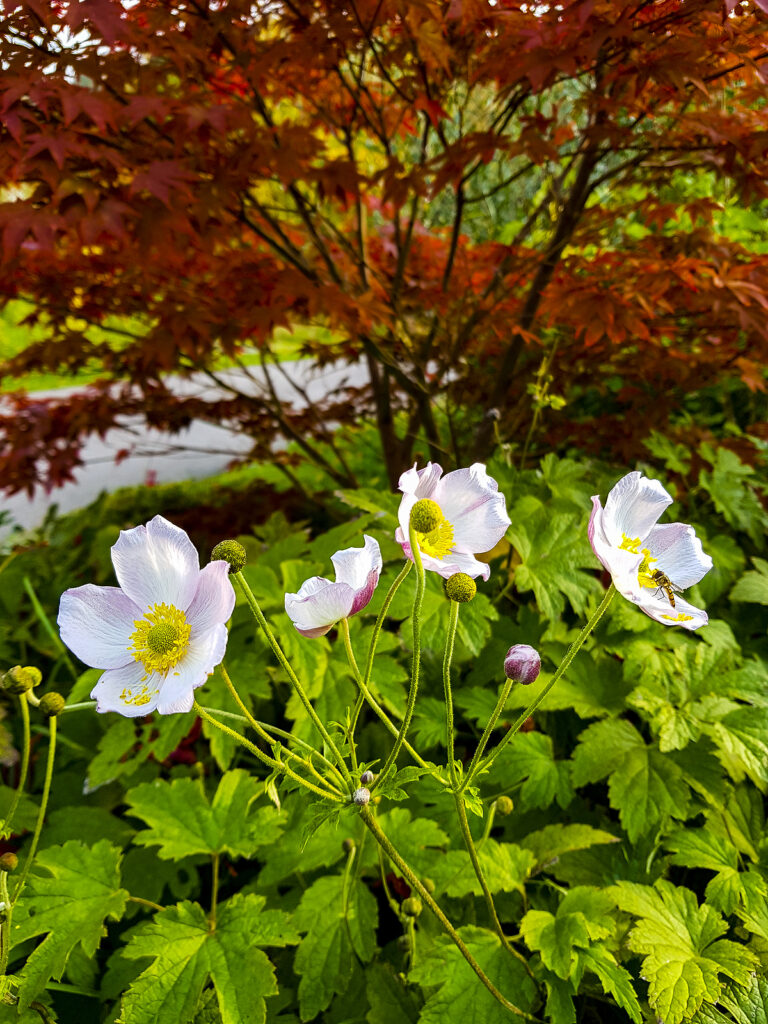
• Windflower (Japanese anemone). Japanese anemones are long-lived perennials that are a must for the fall flower garden. Tall, graceful branching stems to 4 feet (1.2m) tall rise from a clump of dark green lobed leaves. Large 4-inch (10cm) flowers top the stems. Flowers can be single or double in white, silvery pink, or rose depending on the cultivar. Windflowers are effective in clumps in front of tall shrubbery or under high-branching trees. They grow best in moist, rich, well-drained soil in full sun or partial sun.

• Aster (Aster). Showy late-season daisies that bloom late summer through fall. Colors range from blue through purple, pink, and deep rose, as well as white. Asters grow best in full but sun but will tolerate light shade. Asters need rich, well-drained soil but moist soil. They do best where autumn is cool and moist. In the mixed flower border, taller varieties are best in the back of the border with daylilies set in front. Asters are excellent cut flowers.
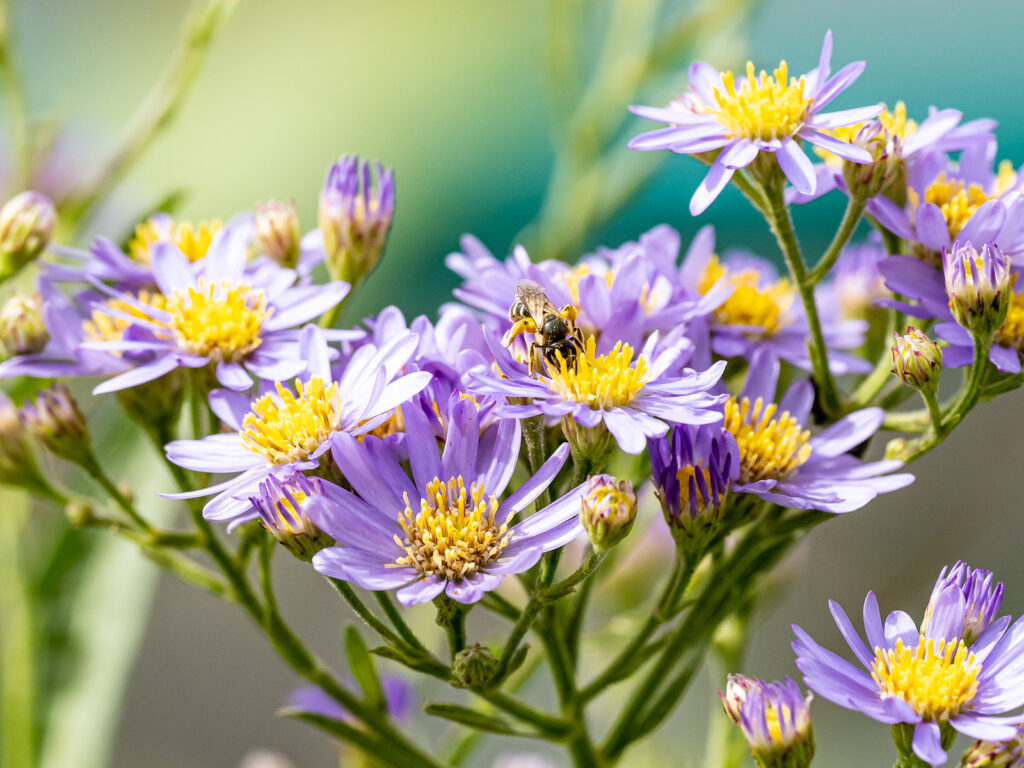
• Bolton’s Aster (Boltonia). Boltonias are not always easy to find, but they are worth the search. They bloom abundantly late in the season. Boltonias are bushy, strongly upright plants covered with an explosion of small white, pink, or blue daisies in early to late fall. They look great in the mixed ornamental border with ornamental grasses, Joe-Pye weed, Autumn Joy sedum, black-eyed Susans, asters, and other plants with attractive fall seed heads. They prefer full sun but will tolerate light shade. They need rich, moist, but well-drained soil. They are drought-tolerant when mature.
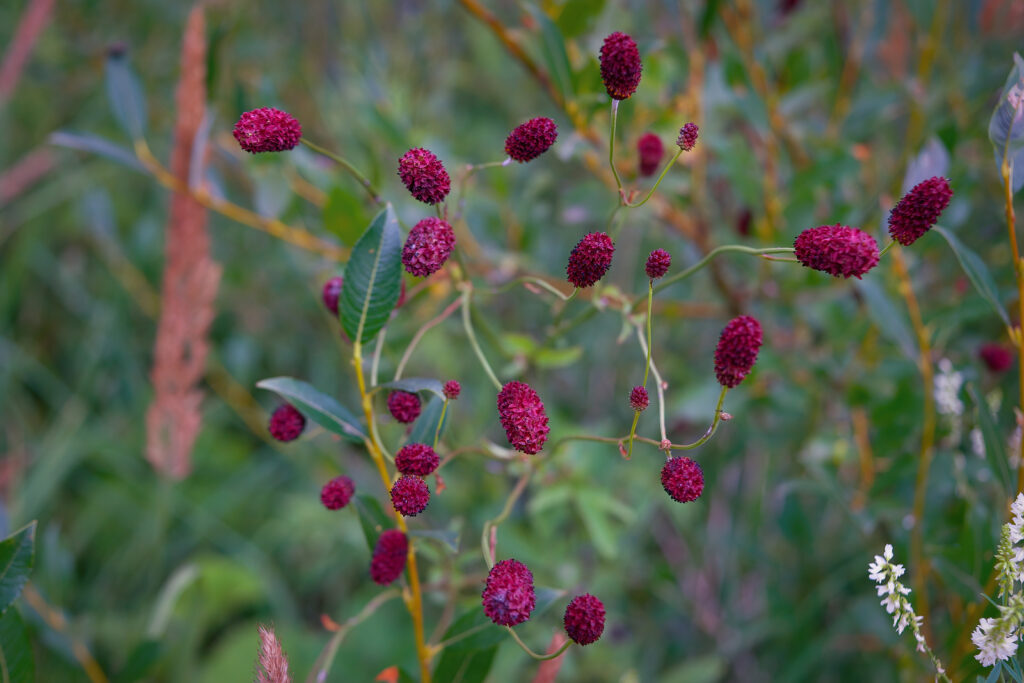
• Burnet (Sanguisorba). Burnet is a hardy perennial herb with usually white, greenish, purple, or crimson catkin-like flower heads or spikes that sometimes reach the height of 6 feet (1.8m). Burnet leaves can be used as a flavoring, as ornamental burnet is a welcome addition to the perennials border. Burnet prefers full sun where the soil stays moist. Burnet quickly naturalizes in the garden or border.

• Goldenrod (Solidago). Goldenrods range from tall fountains of gold when in bloom to low tidy cushions for the front of the border. Goldenrod produces a cluster of small yellow flowers that can brighten any garden. Goldenrods grow from 12 to 36 inches (30-91cm) tall. Tall cultivars may need staking. They prefer full sun and will grow in average to poor, well-drained soil. They do best with moderate moisture but are drought tolerant. Goldenrod is well-matched with asters. Trim blooms frequently for bouquets.
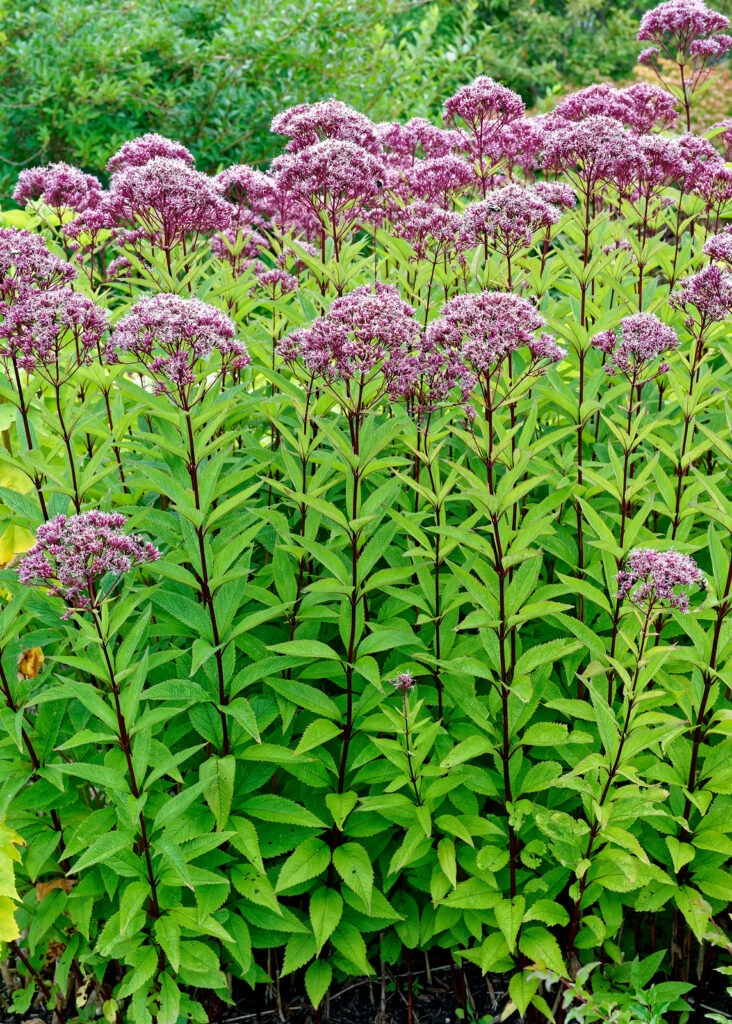
• Joe Pye Weed (Eupatorim purpureum). Joe Pye Weed produces lovely big clusters of mauve flowers atop tall, stately plants. Blooms appear in late summer and early fall and attract butterflies. Joe-Pye grows best in average to rich, moist soil. It needs ample moisture and tolerates wet soil. It grows best in full to half sun. It combines beautifully with ornamental grasses and ‘Autumn Joy’ sedum. It can be used at the rear of a mixed border.a
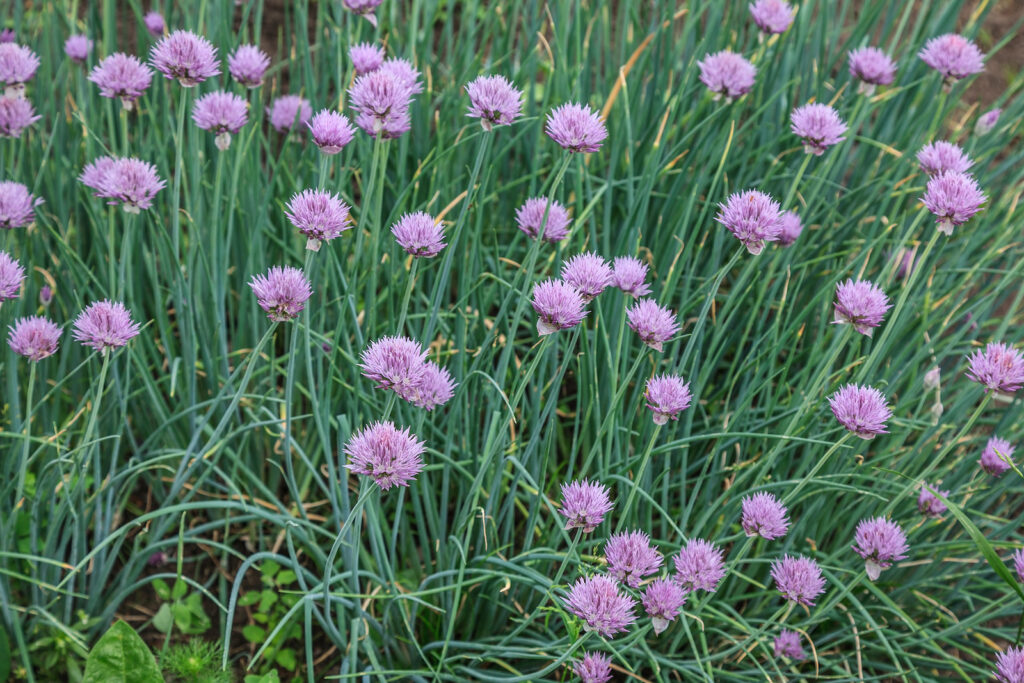
• Allium. Alliums, ornamental onions, grow from 8 inches to 4 feet (20cm-1.2m) tall depending on the cultivar. Flowers come in blue, purple, pink, yellow, and white. There are many species; some bloom in late summer and autumn. Plants have long, grassy or straplike leaves and spherical clusters of small flowers forming a ball on top of tall, sturdy stems. Grow alliums in full sun or light shade. They prefer sandy, well-drained soil and ample water. Alliums attract butterflies.
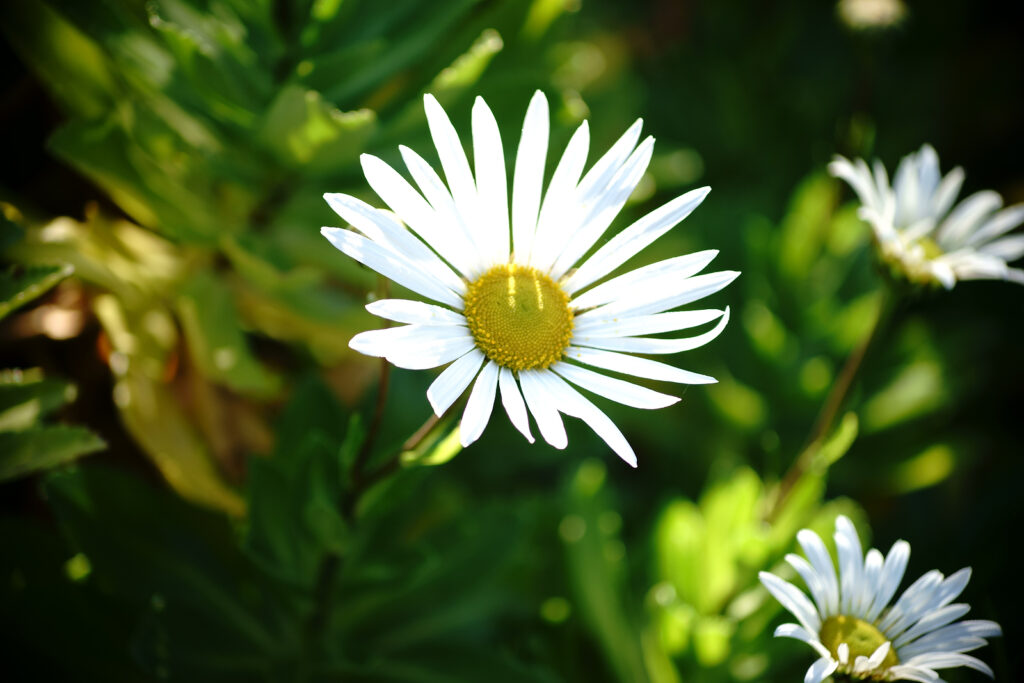
• Nippon Daisy (Nipponanthemum). Nippon daisy is a 2 to 3-foot (.6-.9m), shrubby-based, autumn-blooming perennial with thick leaves and large white flowers. It blooms from early to mid-autumn. It grows best in full sun. It prefers rich, well-drained soil. It is very effective massed in groups and in combination with flowering cabbage and kale, late-blooming asters, and perennials with bright fall foliage such as blue star and blue plumbago.

• Stonecrop (Sedum). Sedum ‘Autumn Joy’ is a robust upright perennial to 18 inches (45cm) tall with light green fleshy leaves and numerous small pink to brick red flowers in autumn. This plant loves poor, dry soil—even rocky or sandy soil. Grow sedum in full sun. Plants make rapid growth and may need staking in partial sun. Butterflies are attracted to sedum. Plant in clusters for best effect. Besides ‘Autumn Joy’ there is ‘Matrona’ with soft dusty-pink flowers and ‘Purple Emperor’ with purple leaves and pink flowers.
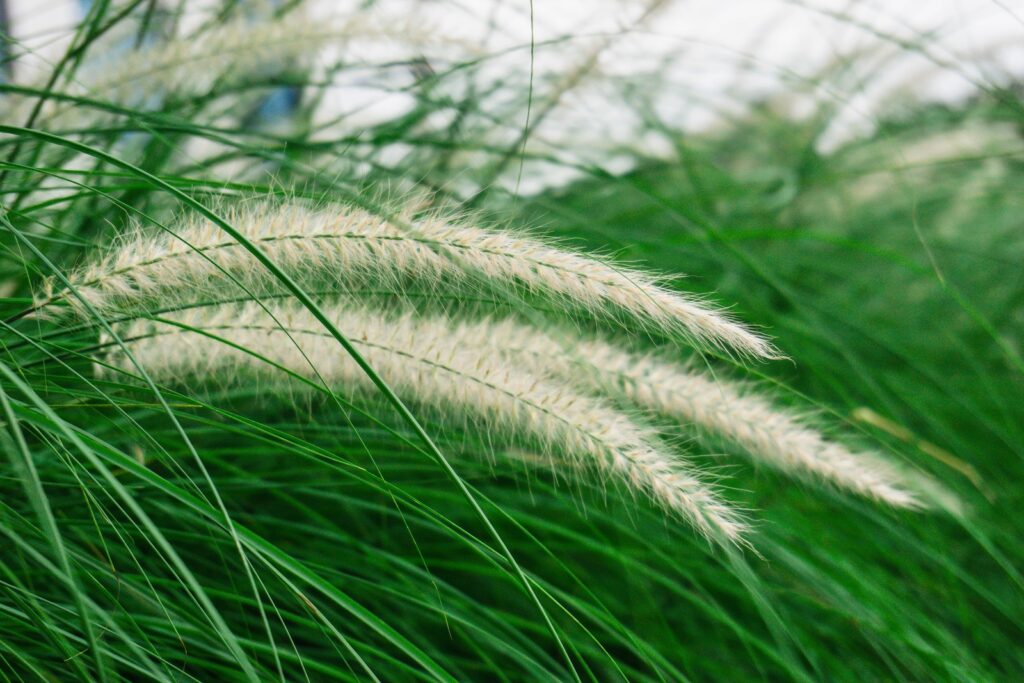
• Ornamental Grasses. Ornamental grasses are grown for their ornamental sprays. They emerge in spring and come into their own in mid- or late summer. They become real garden starts in fall and when winter with colorful fall and winter leaves and nearly all have showy seed heads. Genera to consider include annuals Agrostis, Briza, Coix, Eragrostis, Hordeum, Lagurus, Pennisetum, and Stipa. Tall perennials grasses often used in landscape design are Arrhenatherum, Arunda, Elymus, Erianthus, Miscanthus, Festuca, Cortaderia, Pennisetum, Phalaris, and Setaria.
Also of interest:
Colorful Autumn and Winter Foliage Plants















